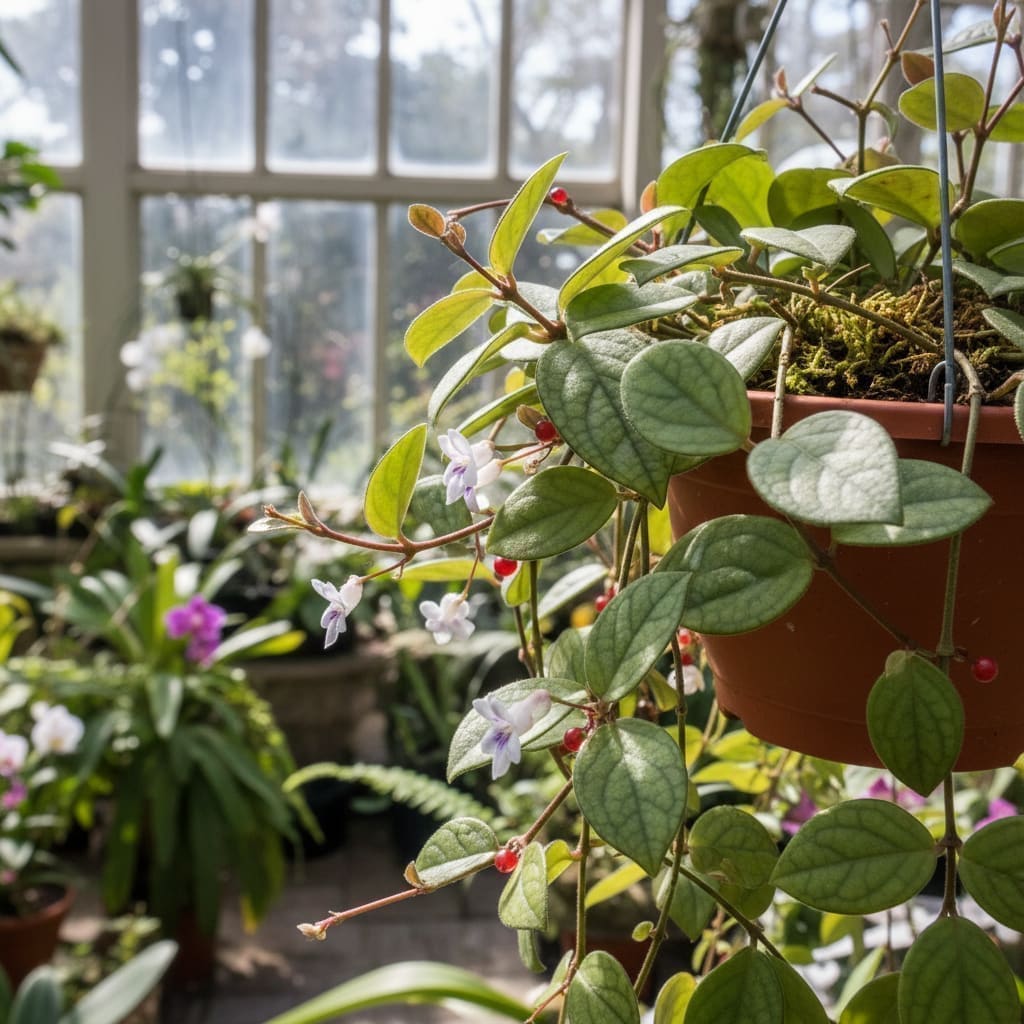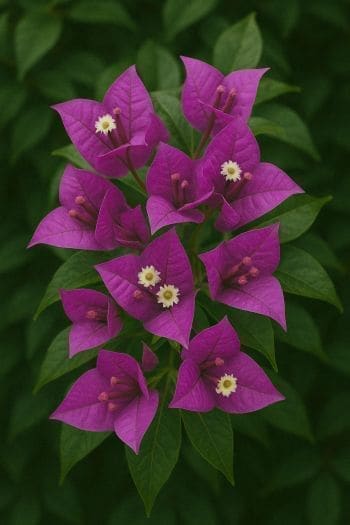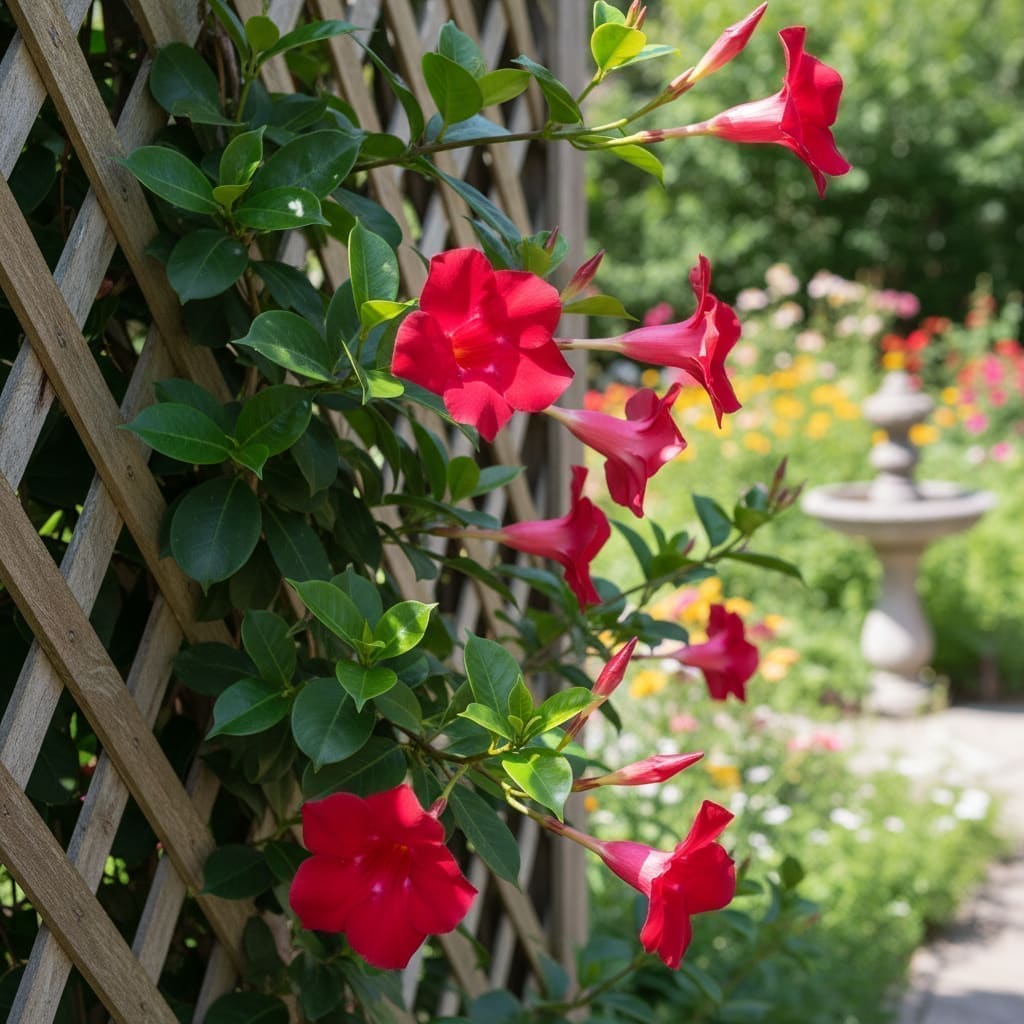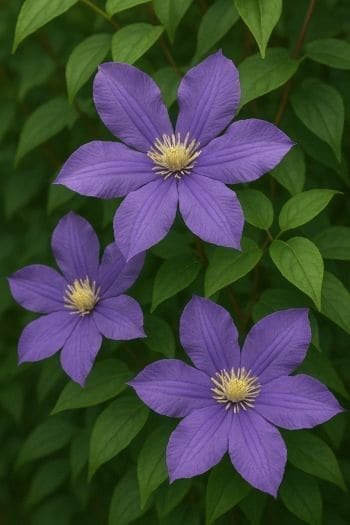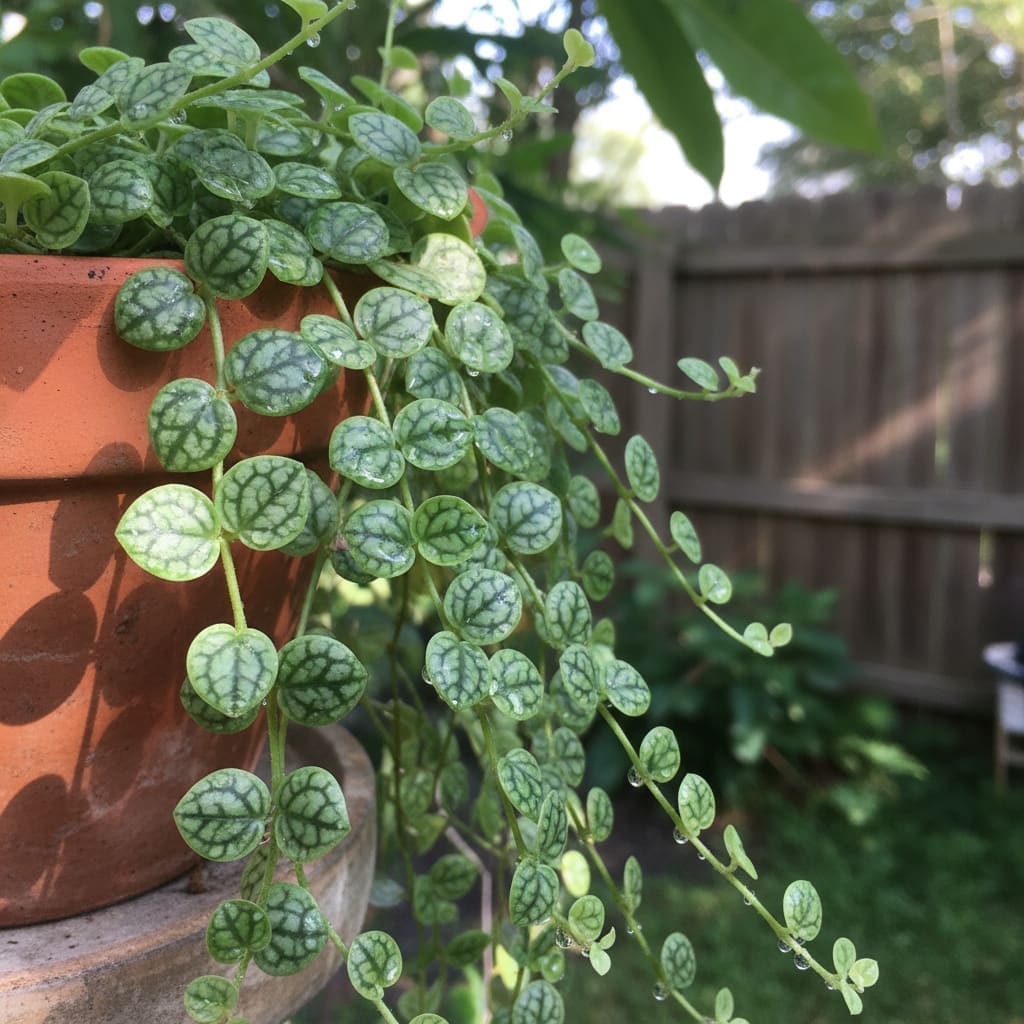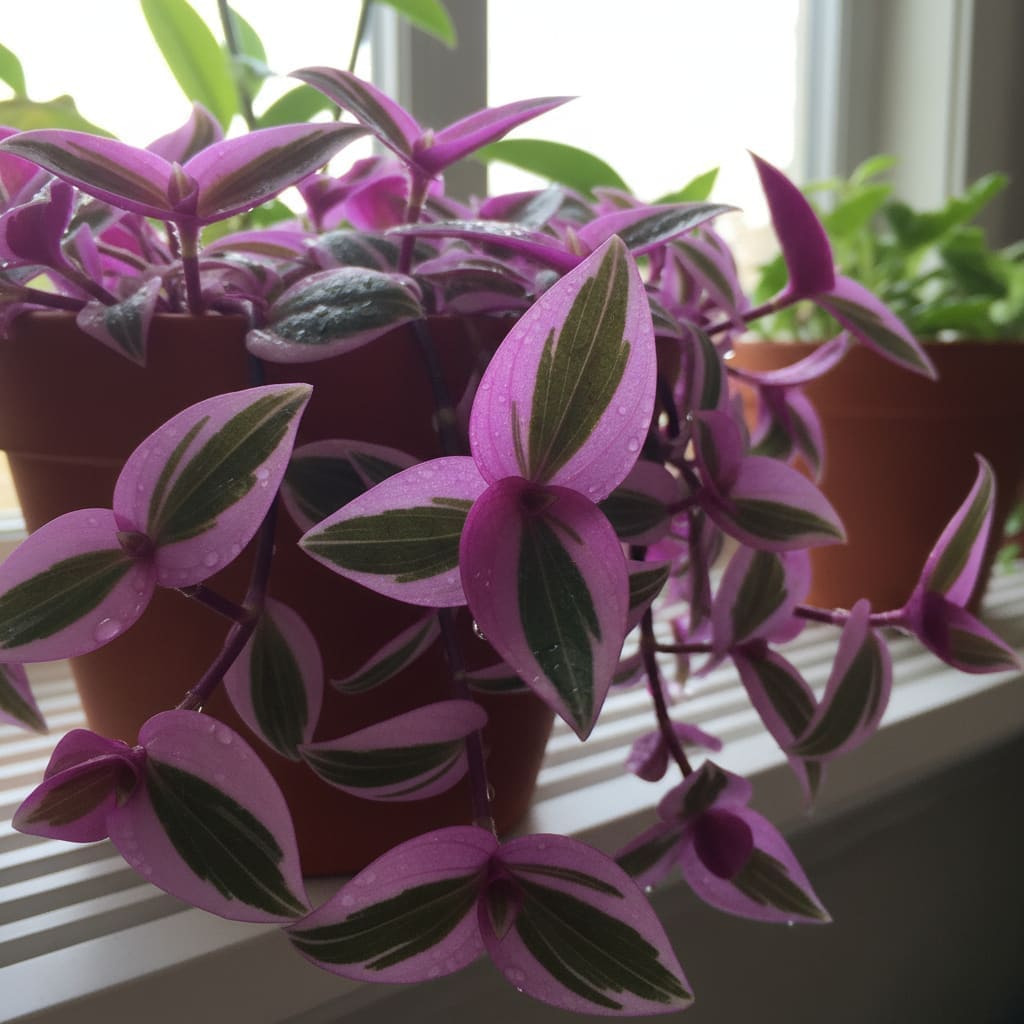Codonanthe devosiana Care & Growing Guide
Overview
Codonanthe devosiana is a charming trailing and sometimes climbing plant native to the rainforests of Brazil. Belonging to the Gesneriaceae family, it is known for its delicate foliage, small tubular flowers, and epiphytic growth habit. In its natural habitat, it grows on tree branches under the forest canopy, benefiting from bright, filtered light and high humidity. Indoors, it makes an excellent choice for hanging baskets, shelves, or trained onto supports.
This species is appreciated for its adaptability to indoor conditions when its basic needs are met. Its non-toxic nature also makes it a safer choice for homes with pets or children.
Identification & Growth Habit
Codonanthe devosiana produces slender, trailing stems that can reach lengths of 2–3 feet over time. The leaves are small, oval to elliptical, and medium to dark green, often with a slightly glossy surface. The plant may produce small, tubular white to pale pink flowers, sometimes followed by ornamental orange berries. As an epiphyte, it can be grown in hanging planters, cascading over edges, or trained to climb a trellis or moss pole.
Light & Placement
Provide bright, indirect light to mimic the dappled sunlight of its rainforest origin. An east-facing window is ideal, offering gentle morning sun. A north-facing window can also work if light levels are sufficient. Avoid prolonged direct midday sun, which can scorch the leaves. In lower light, growth may slow and flowering may be reduced.
- Best placement: Near an east or bright north-facing window.
- Avoid: Harsh afternoon sun or deep shade.
Watering & Humidity
Water moderately, allowing the top inch of soil to dry between waterings. Overwatering can lead to root rot, especially in dense soils. During the active growing season (spring and summer), you may need to water more frequently; in cooler months, reduce watering.
High humidity is important for lush growth. Aim for 50–70% relative humidity. Use a humidifier, group plants together, or place the pot on a pebble tray with water to increase ambient moisture.
Soil & Repotting
As an epiphyte, Codonanthe devosiana prefers a loose, well-draining mix. A blend of peat moss and perlite, or a fine-grade orchid mix, works well. This allows air to reach the roots and prevents waterlogging.
- Repotting frequency: Every 2–3 years, or when roots fill the pot.
- Container choice: Hanging baskets or shallow pots with drainage holes.
Fertilizing
Feed with a diluted liquid houseplant fertilizer every 4–6 weeks during spring and summer. Use a balanced or bloom-boosting formula if you want to encourage flowering. Reduce or stop feeding in fall and winter when growth slows.
Pruning & Training
Regular pruning helps maintain shape and encourages branching. Trim back leggy stems just above a leaf node. This plant can be trained to climb by gently tying stems to a trellis or moss pole, or allowed to trail naturally.
- Prune after flowering to tidy the plant.
- Remove any dead or yellowing leaves promptly.
Propagation
Propagation is straightforward via stem cuttings. Follow these steps:
- Select a healthy stem about 4–6 inches long with several leaves.
- Using clean scissors, cut just below a node.
- Remove the lower leaves to expose at least one node.
- Place the cutting in water or in a small pot with moist, well-draining soil.
- If rooting in water, change the water every few days. If in soil, keep the medium lightly moist.
- Once roots are 1–2 inches long, pot into the regular mix and care for as usual.
Common Problems
Pests
- Spider mites: Look for fine webbing and stippled leaves. Increase humidity and treat with insecticidal soap.
- Mealybugs: White cottony masses on stems or leaf axils. Remove manually and apply a suitable insecticide.
- Aphids: Small green or black insects on new growth. Rinse off or use insecticidal soap.
Diseases
- Root rot: Caused by overwatering or poorly draining soil. Remove affected roots and repot in fresh, airy mix.
- Leaf spot: Avoid overhead watering and improve air circulation.
Toxicity & Pet Safety
Codonanthe devosiana is considered non-toxic to cats, dogs, and humans, making it a pet-friendly choice for indoor gardens. Still, discourage pets from chewing plants to prevent damage to the foliage.
Styling & Decor Tips
This plant’s trailing stems and delicate flowers make it ideal for hanging baskets, wall-mounted planters, or high shelves where its foliage can cascade. It also adapts well to vertical gardens or terrarium-style displays with adequate airflow. Pair with other tropical epiphytes for a lush, layered look.
Varieties & Cultivars
While Codonanthe devosiana is the most commonly grown species in its genus, related species such as Codonanthe gracilis may be found in specialty collections. Cultivar variation is limited, but occasional differences in flower color intensity or leaf size may occur.
Buying Tips & Maturity
When selecting a plant, look for vibrant, unblemished foliage and signs of active growth. Avoid specimens with yellowing leaves, wilt, or visible pests. Younger plants establish quickly, while mature specimens may flower sooner. With good care, stems will lengthen and the plant will develop a fuller, cascading habit over several seasons.
Seasonal Care
- Spring/Summer: Active growth period. Maintain regular watering, feeding, and high humidity.
- Fall/Winter: Growth slows. Reduce watering and feeding; ensure plant is kept above 60°F and away from cold drafts.
FAQ
- How often should I water Codonanthe devosiana? Water when the top inch of soil is dry, typically every 7–10 days in active growth, less in winter.
- Does it need a moss pole? Not necessarily, but it can be trained to climb supports if desired.
- Will it flower indoors? Yes, with bright indirect light and proper care, it can produce small tubular flowers indoors.
- Can it grow in low light? It will survive in moderate light but may become leggy and flower less.
- Is it safe for pets? Yes, it is non-toxic to cats and dogs.
Troubleshooting Scenarios
- Stems elongating with wide gaps between leaves: Indicates insufficient light; move closer to a bright window or supplement with grow lights.
- Leaves curling inward: Often a sign of low humidity or underwatering; increase ambient moisture and check soil moisture more frequently.
- No flowers despite healthy foliage: May be due to low light or excess nitrogen; adjust feeding to a bloom-focused formula and ensure adequate brightness.
- Sudden leaf drop: Can result from abrupt temperature changes or cold drafts; stabilize environment and avoid placing near exterior doors in winter.
Advanced Pruning & Training
For a fuller display, pinch back new growth tips regularly during the active season to encourage lateral branching. To create a living curtain effect, train multiple stems along a horizontal wire or rod, securing with soft ties. For a compact mound, prune trailing stems back by one-third in early spring before active growth resumes. When training vertically, rotate the plant periodically to ensure even light exposure and balanced growth.
Companion Plant Ideas
Pair Codonanthe devosiana with other humidity-loving, low-to-medium light plants for a cohesive display. Good companions include:
- Peperomia prostrata – complementary trailing habit and small leaves.
- Hoya carnosa – contrasting leaf texture and occasional fragrant blooms.
- Ferns such as Nephrolepis exaltata – add feathery foliage and increase humidity.
- Philodendron micans – velvety leaves provide rich color contrast.
Seasonal Care Calendar
| Season | Tasks |
|---|---|
| Early Spring | Repot if rootbound, prune for shape, begin regular feeding schedule. |
| Summer | Maintain high humidity, monitor for pests, pinch stems to encourage branching. |
| Autumn | Reduce feeding, check for any needed pest treatments before indoor overwintering. |
| Winter | Keep in bright light, reduce watering, protect from cold drafts. |
